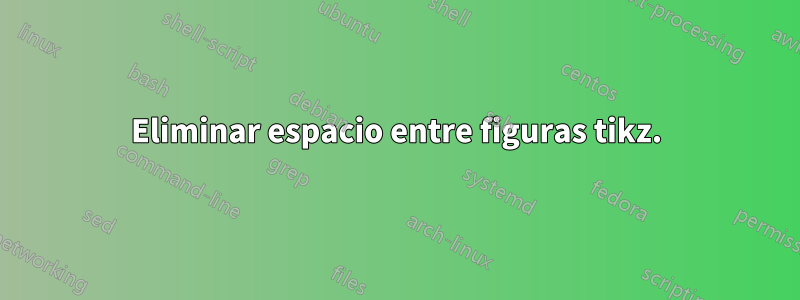
El siguiente MWE
\documentclass{article}
\usepackage{tikz}
\begin{document}
\noindent{}\begin{tikzpicture}\fill [red] (0,0) rectangle (1,1);\end{tikzpicture}
\begin{tikzpicture}\fill [red] (0,0) rectangle (1,1);\end{tikzpicture}\\
\begin{tikzpicture}\fill [red] (0,0) rectangle (1,1);\end{tikzpicture}
\begin{tikzpicture}\fill [red] (0,0) rectangle (1,1);\end{tikzpicture}
\end{document}
produce
Sé que puedo eliminar el espacio en blanco con algo como:
\documentclass{article}
\usepackage{tikz}
\begin{document}
\noindent{}\begin{tikzpicture}\fill [red] (0,0) rectangle (1,1);\end{tikzpicture}\hspace*{-0.3em}
\begin{tikzpicture}\fill [red] (0,0) rectangle (1,1);\end{tikzpicture}\\[-1pt]
\begin{tikzpicture}\fill [red] (0,0) rectangle (1,1);\end{tikzpicture}\hspace*{-0.3em}
\begin{tikzpicture}\fill [red] (0,0) rectangle (1,1);\end{tikzpicture}
\end{document}
pero esto requiere que ajuste manualmente el espaciado y parece propenso a errores. ¿Existe una forma automática de eliminar el espacio en blanco (tanto horizontal como vertical) entre las figuras?
Respuesta1
Puede utilizar un tabular, con los parámetros configurados correctamente:
\documentclass{article}
\usepackage{tikz}
\newenvironment{pics}
{\par\raggedright % maybe \centering
\setlength\tabcolsep{0pt}\renewcommand{\arraystretch}{0}%
\begin{tabular}{*{10}c}}
{\end{tabular}\par}
\begin{document}
\begin{pics}
\begin{tikzpicture}\fill [red] (0,0) rectangle (1,1);\end{tikzpicture} &
\begin{tikzpicture}\fill [red] (0,0) rectangle (1,1);\end{tikzpicture} \\
\begin{tikzpicture}\fill [red] (0,0) rectangle (1,1);\end{tikzpicture} &
\begin{tikzpicture}\fill [red] (0,0) rectangle (1,1);\end{tikzpicture}
\end{pics}
\bigskip
\begin{pics}
\begin{tikzpicture}\fill [red] (0,0) rectangle (1,1);\end{tikzpicture} &
\begin{tikzpicture}\fill [red] (0,0) rectangle (1,1);\end{tikzpicture} &
\begin{tikzpicture}\fill [red] (0,0) rectangle (1,1);\end{tikzpicture} &
\begin{tikzpicture}\fill [red] (0,0) rectangle (1,1);\end{tikzpicture} \\
\begin{tikzpicture}\fill [red] (0,0) rectangle (1,1);\end{tikzpicture} &
\begin{tikzpicture}\fill [red] (0,0) rectangle (1,1);\end{tikzpicture} &
\begin{tikzpicture}\fill [red] (0,0) rectangle (1,1);\end{tikzpicture} &
\begin{tikzpicture}\fill [red] (0,0) rectangle (1,1);\end{tikzpicture} &
\begin{tikzpicture}\fill [red] (0,0) rectangle (1,1);\end{tikzpicture}
\end{pics}
\end{document}
Respuesta2
Las brechas horizontales se explican por la teoría de Andrew.comentario: Espacios por final de línea entre los ambientes.
Dado que las imágenes son más grandes que el salto de línea base, TeX usa el registro \lineskippara separar cuadros en dirección vertical:
\documentclass{article}
\usepackage{tikz}
\begin{document}
\noindent
\begin{tikzpicture}\fill [red] (0,0) rectangle (1,1);\end{tikzpicture}%
\begin{tikzpicture}\fill [red] (0,0) rectangle(1,1);\end{tikzpicture}%
\\[-\lineskip]
\begin{tikzpicture}\fill [red] (0,0) rectangle (1,1);\end{tikzpicture}%
\begin{tikzpicture}\fill [red] (0,0) rectangle (1,1);\end{tikzpicture}%
\end{document}





